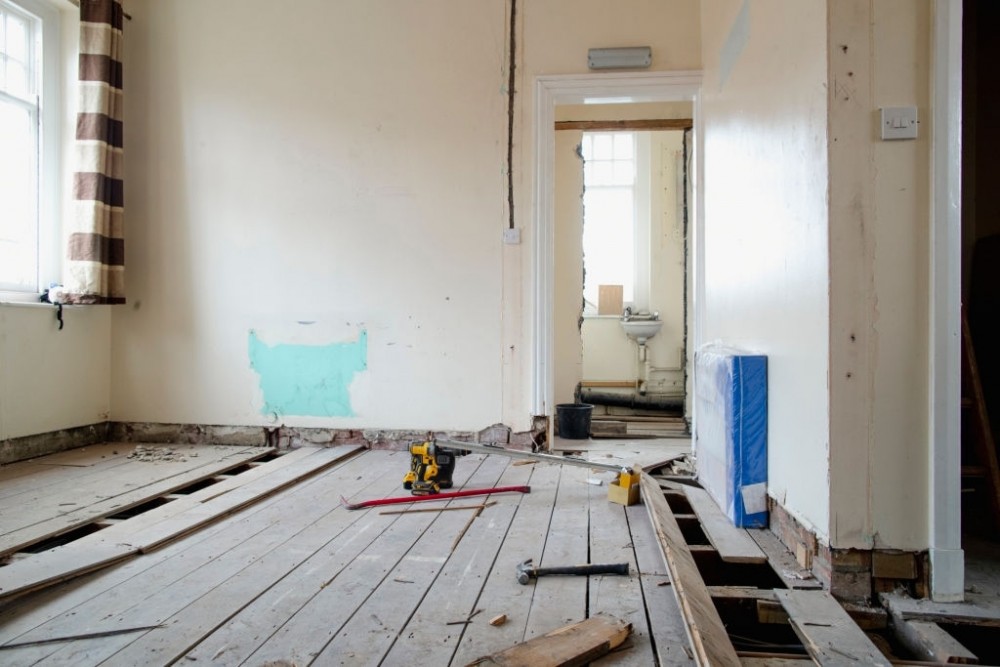
World's First Ceramic-Tile & Sanitaryware Live Marketplace. Get it on Google Play
Get it on App Store
World's First Ceramic-Tile & Sanitaryware Live Marketplace. Get it on Google Play
Get it on App Store
By Tileswale
There are many tools and techniques needed to prepare the floor for tile installation. One of the most important steps is sanding down any imperfections in your subfloor so that it's smooth enough for a quality finish. We'll show you how to choose the right sandpaper, what grit should be used, and how much pressure should be applied when sanding.
The most important prerequisite task, before tile installation is sanding down any imperfections in your subfloor. You'll need to choose the right sandpaper for your project and know what grit should be used and how much pressure should be applied.
Before installing laminate flooring or installing a floor all by yourself (if you know what we mean), we recommend that you make certain the subfloor is as level as possible and is free of cracks or other serious damage. It's best to rent a power miter saw if you want precise cuts or dust-free work with less noise. A smaller toolkit includes safety equipment such as safety goggles, respirator masks, latex gloves and ear protectors/headphones, but it's always best to consult an expert for the specific requirements of your project.
Picking the right sandpaper comes down to making sure that you have a specific need for coarse, medium or fine grit. Coarse grits are best for preparing wood for painting or tearing off old paint. Depending on your needs, you can choose between 60-80 grit, 80-120 grit and 120-150 grit.
Medium grits are what most people use when they want to really take care of any damage done to their floors by smoothing out deep scratches caused by furniture moving around in the house... This type of sandpaper is available in 40-60grit, 60-80grit and 80-120grit.
Fine grained sandpaper is great for polishing any type of flooring material without scratching it. For example, if you want to sand down a rough surface on laminate flooring or remove any small scratches caused by pets. The most common option for fine grit is 100-150grit sandpaper.
To ensure safety while working with tools and power equipment it's essential that you wear the appropriate safety gear including ear protection/headphones, respirator masks, latex gloves and safety goggles.
Too much pressure applied to the sandpaper can cause damage to your floor or create grooves in it that are harder than they're worth to fix! It's best not too apply too much pressure when you're using power tools for sanding down your floors.
Too much pressure applied to the sandpaper can cause damage to your floor or create grooves in it that are harder than they're worth to fix! It's best not too apply too much pressure when you're using power tools for sanding down your floors.
Depending on your needs, you can choose between 60-80 grit, 80-120 grit and 120-150grit.
Medium gritted sandpaper is great for smoothing out deep scratches caused by moving furniture around in the house... This type of sandpaper is available in 40-60grit, 60-80grit and 80-120grit.
Fine grained sandpaper is great for polishing any type of flooring material without scratching it. For example, if you want to sand down a rough surface on laminate flooring or remove any small scratches caused by pets. The most common option for fine grit is 100-150grit sandpaper.
One of the most important tasks that you must do before installing tiles is preparing your subfloor. This means making it as smooth and level as possible, removing any cracks or other damage to it.
Before starting a floor installation project you should make sure that your subflooring has been sanded down perfectly! You can use different grits including 60-80 grit, 80-120grit and 120-150grit.
When it comes to sanding down your subfloor you should also use a random orbital sander as opposed to other power tools because this will prevent any grooves from being created that might be harder than they're worth for future floor installation projects.
For the smoothest possible finish, remember to apply some flooring adhesive before starting your installation project!
Article Updated:- December 14, 2021
1. Step By Step Guide To Install Floor Tiles
2. Easy Steps To Install Natural Stone Tiles
3. How To Install Floating Vinyl Floors?
Submit your inquiries, we will see the rest
size:
Quantity:

+ Requirements

We have received your Inquiry. We will soon connect you with relevent Sellers via tileswale App. download now!!

